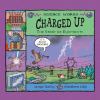-
-
1997., Pre-adolescent, World Book in association with Two-Can Call No: 611 HAS Availability:1 of 1 At Location(s) Series Title: Make it work!Summary Note: Introduces basic facts about the human body with instructions for related experiments and projects.
-
-
2000, Juvenile, Raintree Steck-Vaughn Call No: 530 Availability:1 of 1 At Location(s) Series Title: Science@workSummary Note: This book discusses various aspects of sports and the principles of physics that are involved.
-
-
2000, Pre-adolescent, Copper Beech Books Call No: 629.22 Availability:1 of 1 At Location(s) Series Title: How science worksSummary Note: Outlines the basic science theory behind land transport, including how wheels and suspension work, how land transport vehicles are built, how their engines work, and how they are steered and controlled.
-
-
-- Cars, trains, and motorcycles2000., Copper Beech Books Call No: 629.22 Availability:1 of 1 At Location(s) Series Title: How science worksSummary Note: Outlines the basic science theory behind land transport, including how wheels and suspension work, how land transport vehicles are built, how their engines work, and how they are steered and controlled.
-
-
2004., Juvenile, Picture Window Books Call No: 333.793 BAILEY Availability:1 of 1 At Location(s) Series Title: Science worksSummary Note: This book describes how electrical energy is generated in power stations and how it travels through pylons, power cables, and wires into people's homes.
-
-
2006, c2003., Juvenile, Picture Window Books Call No: 551.3 BAILEY Availability:1 of 1 At Location(s) Series Title: Science worksSummary Note: This is the story of how weather and water wear away at the rock beneath our feet and what happens to the rock next.
-
-
-- World Book encyclopedia presents dinosaursc2003., Juvenile, World Book in association with Two-Can Pub. Call No: 568 HAS Availability:1 of 1 At Location(s) Series Title: Make it work!.
-
-
1996., Juvenile, World Book/Two-Can Call No: 567.9 BEN Availability:1 of 1 At Location(s) Series Title: Make it work!Summary Note: Examines the survival techniques of dinosaurs, including their body design, fighting tactics, and feeding habits. Includes instructions for creating dinosaur models, and experiments to.
-
-
1997., Pre-adolescent, World Book in association with Two-Can Call No: 550 HAS Availability:1 of 1 At Location(s) Series Title: Make it work!Summary Note: Introduces basic facts about geography, weather, and the composition of the Earth with instructions for related experiments and projects.
-
-
1997., Pre-adolescent, World Book in association with Two-Can Call No: 537 BAK Availability:1 of 1 At Location(s) Series Title: Make it work!.Summary Note: Experiments and activities introduce the basic principles of electricity and magnetism.
-
-
2004, Juvenile, Perfection Learning Call No: 537 Availability:1 of 1 At Location(s) Series Title: Reading essentials in science. Energy works!Summary Note: This book is an introduction to electrical energy and discusses Earth's magnetic field.
-
-
2008., Juvenile, PowerKids Press Call No: 537 Edition: 1st ed. Availability:1 of 1 At Location(s) Series Title: How does science work?Summary Note: This book introduces electricity, describing power stations, energy sources, power cables, circuits, conductors, switches, resistors, circuit breakers, and household electrical appliances.
-
-
2008., Juvenile, PowerKids Press Call No: 531 .6 Edition: 1st ed. Availability:1 of 1 At Location(s) Series Title: How does science work?Summary Note: This book introduces forces and movement, describing gravity, balance point, a spinning force, measuring forces, friction, air resistance, floating and sinking, and pressure.
-
-
2008., Juvenile, PowerKids Press Call No: 535 Edition: 1st ed. Availability:1 of 1 At Location(s) Series Title: How does science work?Summary Note: This book introduces light, describing the sun; fire, flashlights, and light bulbs; the speed light travels; transparent, translucent, and opaque materials; shadows; a reflection; refraction; lenses; and the seven different colors of sunlight.
-
-
2008., Juvenile, PowerKids Press Call No: 538 .4 Edition: 1st ed. Availability:1 of 1 At Location(s) Series Title: How does science work?Summary Note: This book introduces magnets and springs, describing properties of magnets, magnetic materials, the uses of magnets, magnetism, magnetic fields, coils that can be squashed or stretched, the push and pull of a spring, and a jack-in-the-box.
-
-
2008., Juvenile, PowerKids Press Call No: 620.1 1 Edition: 1st ed. Availability:1 of 1 At Location(s) Series Title: How does science work?Summary Note: This book introduces natural and man-made materials, describing rocks, the content of soil, wood, cotton, rubber, wool, silk, paper, plastic, properties of materials, and recycling of materials.
-
-
2008., Juvenile, PowerKids Press Call No: 534 Edition: 1st ed. Availability:1 of 1 At Location(s) Series Title: How does science work?Summary Note: This book introduces sound, describing natural sound sources, living sound sources, and man-made sound sources; sound waves; the travel of sound in air, water, and other liquids; the high and low pitches of sound; and the measurement of sound.
-
-
c1996., Raintree Steck-Vaughn Call No: 532.2 Jen Availability:1 of 1 At Location(s) Series Title: Making science workSummary Note: Explains displacement and fundamentals of sailing, gives directions for building a catamaran and a hovercraft, and suggests experiments showing how things float.
-
-
2000, Juvenile, Raintree Steck-Vaughn Call No: 641.3 Availability:1 of 1 At Location(s) Series Title: Science@workSummary Note: This book introduces the scientific aspects of food, including how the body uses food as fuel, how each food has its own taste, and how to keep food fresh.
-
-
1999., Copper Beech Call No: 629.13 Haw Availability:1 of 1 At Location(s) Series Title: How science worksSummary Note: Explains the basic science of flight, the problems of getting vehicles into the air, different types of engines, and aircraft design. Includes instructions for making aircraft models.





















